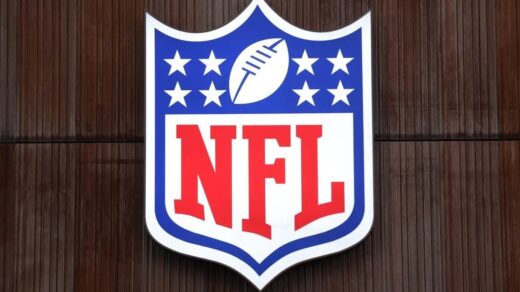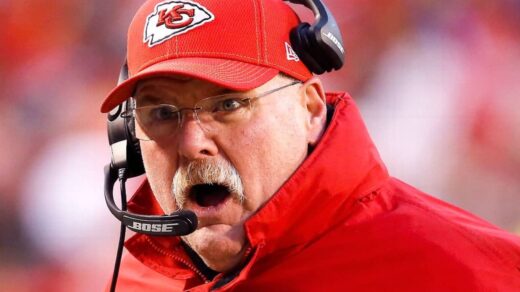Have you ever wondered if the key to building a championship roster in the NFL lies in drafting strategy over just focusing on sheer talent?
When you consider how successful teams navigate the draft, it’s clear they don’t just rely on selecting the most promising players.
Instead, they assess a player’s potential impact on and off the field and balance immediate needs with prospects.
NFL Draft Analysis

The intricacies of these decisions, from honing in on certain positions to making inspired, forward-looking trades, form the foundation of ongoing success.
So, what’s the secret sauce to crafting a team that consistently performs at the highest level?
Key Takeaways:
- Top teams develop strategic draft frameworks to consistently make high-value player selections.
- Accumulating draft picks increases the chances of drafting quality players for sustained success.
- Filling critical positions like edge defender and defensive interior stabilizes defensive depth.
- Effective trading and asset management balance immediate performance with future potential.
- Prioritizing versatile athletes enhances roster versatility and adapts to different game strategies.
Draft Strategy and Planning
A cornerstone of effective NFL draft strategy is establishing a consistent, adaptable framework to guide all decisions.
Successful teams categorize players into tiers—based on high-level production, standout traits, or a blend of both—to ensure uniform evaluations throughout the draft process.
Straying from this structure can lead to inconsistent choices and missed value.
While off-field considerations such as character and intelligence are important, they should support rather than overshadow on-field performance.
Mastering cross-positional value is essential; understanding how each position contributes within a specific league context helps teams make more strategic selections.
Incorporating insights from NFL matchup analysis and league trends also improves projections and helps identify undervalued prospects.
Recognizing positional scarcity is particularly critical when targeting workhorse running backs—those who handle a significant share of their team’s workload.
Due to their rarity, these players often offer a competitive advantage. However, flexibility is just as vital as planning.
Teams should avoid drafting strictly for need, but remain open to seizing unexpected opportunities.
A flexible approach allows organizations to adapt and capitalize as the draft unfolds.
Additionally, accumulating draft picks increases the likelihood of success by spreading risk across multiple selections, rather than relying heavily on a single high-risk pick.
Key Positions Filled
When looking to fill key positions in the 2025 NFL Draft, consider the abundance of talent at edge defender, defensive interior, and running back positions.
You’re entering a draft rich with options that can transform your roster. Edge defenders are plentiful, with standout prospects like Abdul Carter and Jalon Walker.
Not only can they ramp up your pass rush, but their versatility allows them to fit into linebacker roles, too. Meanwhile, defensive interiors boast depth beyond just the first round, ensuring continued defensive stability.
Then there’s the running back class, offering talent deep into Day 2, with names like Ashton Jeanty leading the charge.
For instance, the New England Patriots have made strategic moves by signing star players like Stefon Diggs, adding depth and experience to their roster. Here’s what to watch out for:
- Edge defenders are ensuring defensive pressure
- Versatile athletes expanding roles
- Interior defensive line depth
- Running backs boost offensive dynamics
- Prospects available beyond early rounds
Trading and Asset Management
Managing trades and assets during the NFL Draft is a strategic dance involving calculated risks and potential big rewards.
Consider teams like the Buccaneers and Browns, eyeing opportunities to trade up for immediate impact players in critical positions.
Trading up can cost mid-round picks, but the chance to land a game-changer makes the gamble enticing.
On the flip side, the Saints exemplify a shrewd trading down approach to gain more draft capital, addressing multiple team needs and spreading risk across several picks.
It’s a dynamic that mirrors the kind of strategic thinking fans enjoy when making picks on platforms like FanDuel, where balancing risk and reward is key.
Effective asset management is about balancing today’s requirements with tomorrow’s objectives, knowing when trading picks can enhance your roster.
Weigh the risks of losing future assets against the immediate reward of acquiring high-caliber players.
Depth and Role Players
As the NFL Draft progresses beyond the early rounds, the focus shifts to building depth and securing role players who can be the backbone of your team’s success.
It’s crucial to target positions where depth can positively influence your season.
- Edge Defenders: Find talent in the fourth round, with future starters and key rotational players.
- Running Backs: Look for early-impact runners in the middle to late rounds, offering speed and versatility.
- Interior Defensive Line: A strong pool of quality starters available, especially around Day 2.
- Tight Ends: Top prospects offer upside, but later-round backups can still bring value.
- Offensive Line: Continuity is key, and interior linemen outperform expectations in early rounds.
Invest in these areas to enhance roster depth and maintain sustained success.
Risk vs. Reward Decisions
In the intricate landscape of the NFL Draft, navigating through risk versus reward is essential for building a championship roster.
You’ll find that some positions, like interior offensive linemen and tight ends, offer reliable returns. Their high hit rates of 70.0% and 73.3% in the early rounds highlight their relative safety.
Meanwhile, positions like edge rusher and wide receiver demand calculated risks. Despite lower hit rates, teams often gamble on raw talent and potential returns.
With cornerbacks, teams face a different challenge as the pressure to fill weak-link positions lowers the hit rate to 50.0%.
Strategic balance hinges on recognizing when to prioritize potential over proven stability, aiming for that invaluable synergy between immediate need and long-term team vision.
Long-Term Impact
Balancing risk and reward in draft decisions sets the stage for the lasting influence these selections have on a team’s success.
Management will shape the franchise’s future through strategic choices. Building depth and addressing immediate needs via the draft creates a robust foundation.
- Interior Defensive Line: Secure long-term stars like Mason Graham.
- Tight Ends: Focus on adding depth behind prospects like Tyler Warren.
- Offensive Tackles: Draft solid future starters such as Armand Membou.
- Wide Receivers: Guarantee depth for WR3 and WR4 positions.
- Running Backs: Use draft capital to strengthen backfield options.
Unlocking the Blueprint for Championship Rosters
So, is drafting strategy truly more important than sheer talent when it comes to building a championship team? The evidence suggests yes.
By developing a disciplined, forward-thinking approach—one that values key positions, maximizes draft capital, and carefully weighs risk vs. reward—top NFL teams don’t just chase stars; they build sustainable success.
Whether it’s identifying value beyond Round 3 or securing versatile, high-impact players at critical positions, the most successful franchises treat the draft like a long game.
They understand that every pick is an opportunity, not just to fill a gap, but to shape the culture and future of the team.
In the end, it’s not about luck or hype. It’s about having a plan, sticking to it, and knowing when to pivot. That’s the real secret to turning draft day decisions into Super Bowl wins.



